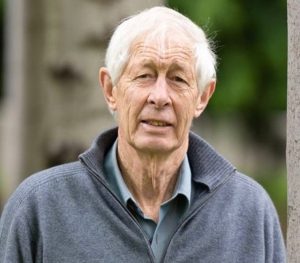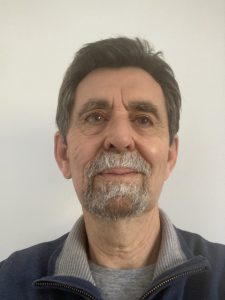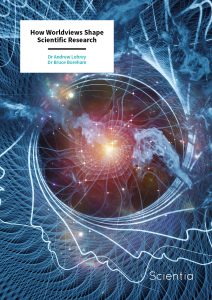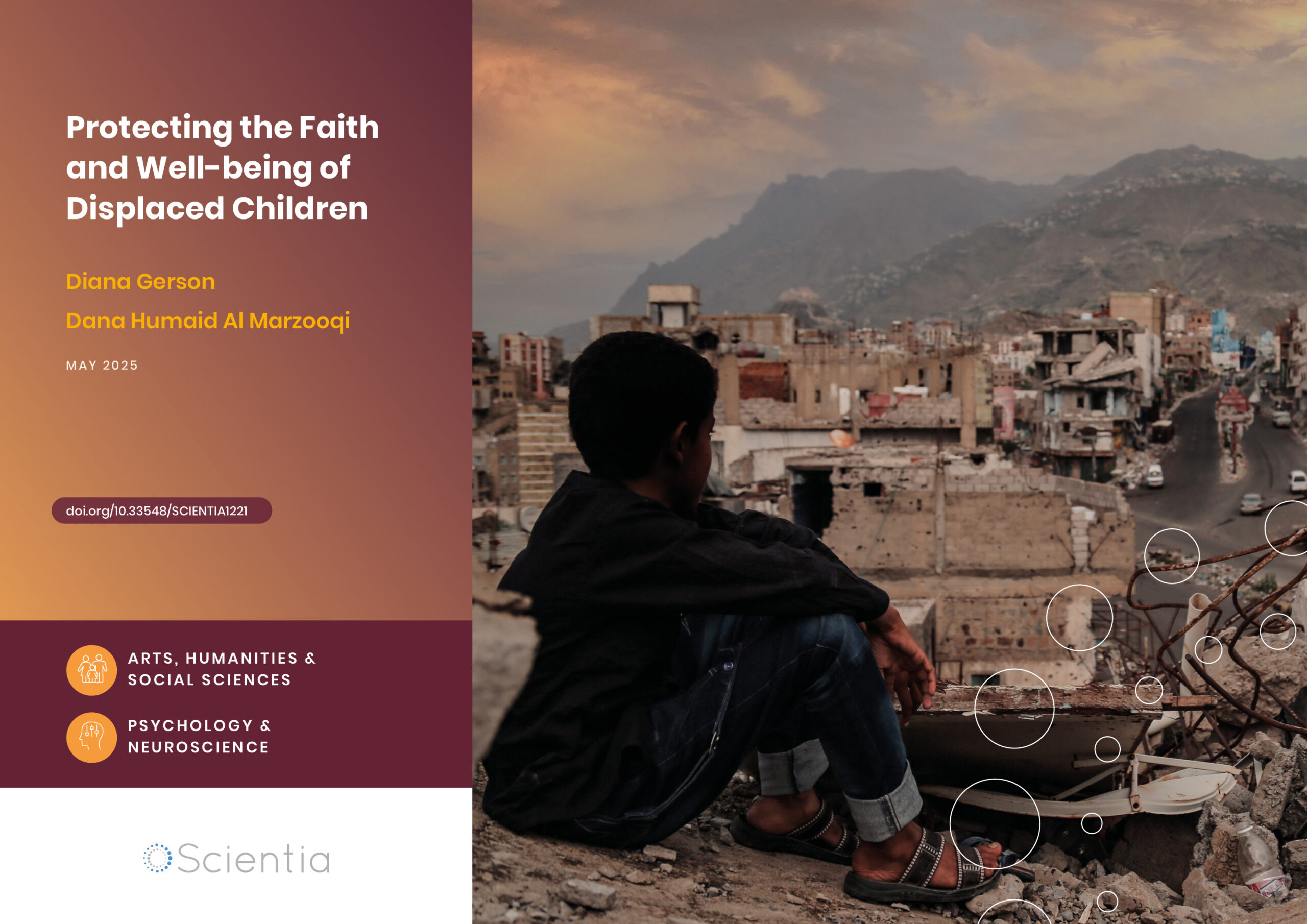Dr Andrew Lohrey – Dr Bruce Boreham | How Worldviews Shape Scientific Research
Dr Andrew Lohrey and Dr Bruce Boreham suggest that all scientific research, as well as everyday inquiry, is framed by one of two underpinning, organising principles: ‘content determines content’ or ‘context determines content.’ ‘Content determines content’ is the most commonly used principle in science and means that the discursive content of results and conclusions will be elaborations of what has already previously been communicated. The second, more open-ended principle is ‘context determines content’, meaning that results or conclusions will take account of the context in which the research and inquiry have taken place. But ‘what is a context’?
Determining the Principles Behind Scientific Research
A context can be an environment, a situation, language, culture, meaning, mind and consciousness. All these distinctions come down to the context of mind and consciousness. This reduction occurs because mind and consciousness have created each of these contexts. Dr Andrew Lohrey and Dr Bruce Boreham argue that scientific research that erases, dismisses, or devalues mind and consciousness is based upon the closed principle of content determines content. This proposes that the content of the scientist’s prediction of outcomes of some theoretical or experimental work (their hypothesis), in turn, shapes the facts that support it.
The effects of this principle are equivalent to not stepping outside of the box of traditional thought and practice – or, in other words, not stepping out of the conventional worldview. In science, this is the worldview of atomism, so called because it fragments and atomises knowledge by splitting and breaking everything down into small, fixed units that separate and divide the world. A key separation of atomism is the gap between mind and body. They argue that this principle frames most of what we consider scientific research today. In his book ‘Relativity’, Einstein’s consideration of geometry represents an example of content determining content: ‘Geometry, however, is not concerned with the relation of ideas involved in it to objects of experience, but only with the logical connection of these ideas among themselves.’ [1]
In contrast, simple examples of context-determining content can be found in the Koans of Zen Buddhism, such as: ‘Where does the lap go when you stand up?’. These riddles are designed to develop a greater awareness of how content is determined by context.
Dr Lohrey and Dr Boreham suggest that the worldview of atomism does not take account of mind and consciousness, and this means traditional scientific research will contain the same partial view of the universe. In practice, this partial worldview is manifest in scientific research by following the closed principle of content determines content. Worldviews do not guarantee unbiased truth; quite the reverse. Worldviews differ not about how ‘objective’ they are but in terms of how open or closed they are.
In contrast to the closed worldview of atomism, the worldview of wholeness is open to the degree it has no boundaries. The universe of wholeness is one of total interconnection. It is manifest in scientific research when mind and consciousness are explicitly included in its investigations and follows the interconnecting principle of context determines content. Consequently, the worldviews of atomism and wholeness represent how we understand and conceptualise mind and consciousness and this, in turn, will frame our worldview.

How Consciousness and Worldviews Affect are Connected
The manner in which scientists view the world, that is, through the worldviews of atomism or wholeness, relates directly to how we understand mind and consciousness. For atomism, mind and consciousness are reduced to the private subjectivity of the human mind, which is seen to be a bland side-effect produced by the physical brain and represents a separate unit from other unit minds and from the independent physical world.
For the worldview of atomism, the mind comes second to the primacy of an independent physical universe, which is seen to be the foundation of the universe. Hence, the possibility of interdisciplinary research tends to be reduced in breadth and depth by a forensic and exclusive focus on local explicit details, which become the currency of highly acclaimed specialisations. Thus, this worldview tends to dismiss the importance of mind and consciousness and, therefore, tends not to use the principle of context determines content in scientific research.
In contrast, the worldview of wholeness understands mind and consciousness to be an interconnected whole. This means that consciousness represents the nonlocal and infinite domain of Omni consciousness, while mind represents the local domain of the human mind. While these two have their own distinct subject matter that can be studied, they are nevertheless entirely interconnected and integrated.
Dr Lohrey and Dr Boreham have called this integrated whole Omni-local consciousness and suggested that the context of Omni-local consciousness represents the only context of all content. The logic of this conclusion comes from the fact that all content is produced by the human mind, which is the local feature of the singular context of Omni-local consciousness.

The Structure of the Omni Consciousness
Omni-local consciousness has three domains, not just two (i.e., nonlocal and local). These are the Omni domain of the unseen, the local domain of the seen, and the local domain of thought and expression. These three domains have an integrated architecture that is provided by the structure of meaning. Dr Lohrey and Dr Boreham have based their theory of meaning on David Bohm’s established research and discussions on meaning [2]. That research has indicated that meaning represents the content of consciousness and, therefore, the holistic context of mind and consciousness can be discussed in terms of the structure and function of meaning. Meaning’s structure and function come from its implicit and explicit conditions.
Hence, the flowing and dynamic domain of Omni consciousness (the unseen) has the structure of implicit-to-implicit exchanges of meaning. These exchanges are experienced with intuition, insight and with epiphanies. The second domain of the seen has a structure of implicit-to-explicit exchanges of meaning. The transformations within this domain are from implicit to explicit; from an unseen background that gives rise to a foreground set of distinctions and differences that become the experiences of sense perceptions. The third domain of Omni-local consciousness (thought and expression) encompasses three sets of exchanges, and these are implicit-to-explicit, explicit-to-explicit and explicit-to-implicit meaning.
The first set of exchanges in the domain of thought and expression are the basis of the worldview of the private self, whereas the last two sets of exchanges represent the meaning-basis of the two worldviews of atomism and wholeness. These last two worldviews are relevant to the work of science.
While the first and second domains of Omni-local consciousness (the unseen and the seen) are beyond the control of human minds, local minds do have some choices regarding the learning changes that can occur within and between the three worldviews. This local control involves choosing to acknowledge and be open to the natural order and learning movements between these three worldviews or instead habitually resisting this evolution by closing off to its flow. For example, within mainstream science, the most common method of closing off to wholeness is to studiously follow the applied principle of content determines content.
However, the choice of moving between worldviews is usually not a freedom of choice because behind each worldview is a set of habits, assumptions, and predispositions, and these are very difficult to change. Consequently, most people rely on an understanding of the world and their values system on one of the three worldviews of the private self, atomism, or wholeness.

The Omni-Consciousness, Context and Communication in Science
Finally, our worldview can also translate into how we communicate. The third domain of Omni-local consciousness has two features, and these are thoughts and expressions. These two give feedback to each other so that our thoughts are refined by our communications and vice versa. This also means that our communications will tend to reflect and represent the worldview we predominantly use.
For example, communications that are framed by the habits of a private self tend toward literal, dogmatic, closed expressions that are assumed to have a single meaning (reification). Communications that reflect the worldview of atomism are those that over-value differentiation so they produce separations, gaps and divisions. These are the kinds of communications that over-value differences to the extent that contexts are ignored.
Hence, if we hold an atomistic worldview, our communications are more likely to prioritise differences between our research and others, as opposed to finding connections between them. These kinds of communications also value the kind of language that appears to provide the immediate certainty of a single axiomatic meaning. This happens when language ceases to be a provisional map of a territory and instead becomes reified into its own territory.
The communication model that reflects wholeness will, unlike the other two worldviews, consciously foreground the basis of its worldview while taking both implicit and explicit meaning into account. Such communication addresses the architecture of Omni-local consciousness and all that that entails for science. If this is applied, we find that the uncertainties of implicit meaning are at the very heart of all communication exchanges. These uncertainties are inherent in our linguistic, social, or cultural contexts.
Every piece of research has a context. For example, the author is associated with a particular period in time, or the research group is working within a particular culture. Hence, uncertainty becomes a necessary and inherent feature of all communication, and so every discourse will entail contradictory functions that simultaneously reveal and conceal meaning. Within the provisional worldview of wholeness, the mysteries and uncertainties of consciousness, mind and communication are accepted, not as problems to overcome but as stimulating possibilities that need to be explored.
Overall, Dr Lohrey and Dr Boreham suggest that scientific research would be more productive, coherent and efficient if it gave up the atomist worldview and its application of the principle that content determines content. Such a change would lead to the coherent worldview of wholeness, and its principle of context determines content. The worldview of wholeness is more reliable because it is not a partial view of the universe as it includes everything, leaving nothing out of the totality of this interconnected holistic universe.
Footnote
[1] A Einstein, Relativity the special and general theory, 1920.
[2] D Bohm, Unfolding Meaning: A Weekend of Dialogue with David Bohm, 1984.
SHARE
DOWNLOAD E-BOOK
REFERENCE
https://doi.org/10.33548/SCIENTIA970
MEET THE RESEARCHERS

Dr Andrew Lohrey
Dr Andrew Lohrey received his PhD in Communications from the University of Technology, Sydney, in 1993. Prior to this, he established a political career in Australia as a Member of Parliament, serving as Cabinet Minister and Speaker of the House in the Tasmanian House of Assembly. He has written and edited numerous works covering topics from politics, religion, phenomenology, and the philosophy of science. His latest book was The Evolution of Consciousness: A New Science, published in 2018.
CONTACT
E: andrew.lohrey@gmail.com
Address: PO Box 249
St Marys
TAS 7215
Australia

Dr Bruce Boreham
Dr Bruce Boreham gained his PhD in gas dynamics from the Australian National University in 1974. Following this, he pursued a career in Industry, Universities, and Government as a researcher, academic and policy advisor. He was Foundation Professor of Physics at Central Queensland University, where he was also Head of the Department of Physics from 1989 until 1998. During his career, he has published extensively in physics, environmental and engineering physics, and the philosophy of science, with a particular focus on the nature of reality. He is a Fellow of the Australian Institute of Physics.
FURTHER READING
A Lohrey, B Boreham, The two principles that shape scientific research, Communicative and Integrative Biology, 2023, 16(1), 2203625. DOI: https://doi.org/10.1080/19420889.2023.2203625
A Lohrey, B Boreham, Omni-local consciousness, Communicative and Integrative Biology, 2022, 15(1), 193–208. DOI: https://doi.org/10.1080/19420889.2022.2107726
A Lohrey, B Boreham, Lifting the veil of Bohm’s holomovement, Communicative and Integrative Biology, 2021, 14(1), 221–229. DOI: https://doi.org/10.1080/19420889.2021.2001157
A Lohrey, B Boreham, The nonlocal universe, Communicative and Integrative Biology, 2020, 13(1), 147–159. DOI: https://doi.org/10.1080/19420889.2020.1822583
REPUBLISH OUR ARTICLES
We encourage all formats of sharing and republishing of our articles. Whether you want to host on your website, publication or blog, we welcome this. Find out more
Creative Commons Licence (CC BY 4.0)
This work is licensed under a Creative Commons Attribution 4.0 International License. 
What does this mean?
Share: You can copy and redistribute the material in any medium or format
Adapt: You can change, and build upon the material for any purpose, even commercially.
Credit: You must give appropriate credit, provide a link to the license, and indicate if changes were made.
SUBSCRIBE NOW
Follow Us
MORE ARTICLES YOU MAY LIKE
How Food Environments Shape Our Eating Habits
How we eat dramatically impacts our health, yet millions of Americans live in ‘food deserts’ – areas with limited access to fresh, nutritious food. Recent research reveals that solving this crisis requires looking beyond just physical access to food to understand how our entire community environment shapes our dietary choices. Through a series of pioneering studies, Dr Terrence Thomas and colleagues at North Carolina A&T State University have been investigating how different aspects of our food environment influence what we put on our plates. Their findings suggest that creating lasting change requires reimagining how communities engage with food at every level.
Rediscovering Alfred Russel Wallace: The True Location of His Ternate Residence
In February of 1858, naturalist and explorer Alfred Russel Wallace, whilst in the village of Dodinga at Halmahera Island, Indonesia, independently outlined his theory of evolution through natural selection.
Wallace then returned to his rented home on the small island of Ternate, and sent his manuscript —now known as “The Ternate Letter”— to Charles Darwin.
For nearly 80 years Wallace’s rented house has been a subject of debate, with two houses contending as candidates albeit, as this paper confirms, neither being valid. The paper written by Paul Whincup describes how a combination of new research, fieldwork, and local insight has finally pinpointed the true site of Wallace’s House at Ternate.
Diana Gerson – Dana Humaid Al Marzooqi | Protecting the Faith and Well-being of Displaced Children
In an era marked by increasing global upheaval, the world faces an unprecedented humanitarian challenge: nearly half of the world’s 117 million displaced people are children under 18. This stark reality has prompted researchers to examine not just the physical and emotional toll of displacement but also its profound impact on children’s spiritual and religious well-being. A groundbreaking study led by Diana Gerson and Dana Humaid Al Marzooqi at the Global Advocacy Hub for Children and Families has unveiled critical gaps in current humanitarian frameworks, particularly regarding protecting displaced children’s religious identity and spiritual welfare.
Professor Robert B Heimann | Culinary Craftmanship: The Evolution of Pottery for Cooking
Cooking food is arguably one of the most important transitions in human evolution, and initiated hundreds of thousands of years of refinement in both technique and technology. Professor Emeritus Robert B Heimann of TU Bergakademie Freiberg, Germany, recently reviewed the evidence for early cooking vessels and tracks the evolution of their production, identifying important strategies of optimisation using various natural materials, firing methods, and designs to improve durability, functionality, and efficiency over time.





